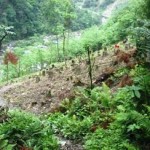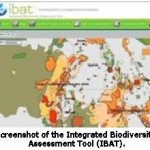The work was supported by UC Berkeley’s Atmospheric Sciences Center, NASA’s Upper Atmosphere Research Program, the Camille Dreyfus Teacher-Scholar Award, the Brain 21 Korea Program, a Korean government research grant through Seoul National University, and the Australian government’s Cooperative Research Centres Programme.
Finding the Fingerprint of Fertilized Microbes
Boering was able to trace the source of N2O because bacteria in a nitrogen-rich environment, such as a freshly fertilized field, prefer to use nitrogen-14 (14N), the most common isotope, instead of nitrogen-15 (15N).
“Microbes on a spa weekend can afford to discriminate against nitrogen-15, so the fingerprint of N2O from a fertilized field is a greater proportion of nitrogen-14,” Boering said. “Our study is the first to show empirically from the data at hand alone that the nitrogen isotope ratio in the atmosphere and how it has changed over time is a fingerprint of fertilizer use.”
Just as telling is the isotope ratio of the central nitrogen atom in the N-N-O molecule. By measuring the nitrogen isotope ratio overall, the isotope ratio in the central nitrogen atom, and contrasting these with the oxygen-18/oxygen-16 isotope ratio, which has not changed over the past 65 years, they were able to paint a consistent picture pointing at fertilizer as the major source of increased atmospheric N2O.
The isotope ratios also revealed that fertilizer use has caused a shift in the way soil microbes produce N2O. The relative output of bacteria that produce N2O by nitrification grew from 13 to 23 percent worldwide, while the relative output of bacteria that produce N2O by denitrification – typically in the absence of oxygen – dropped from 87 to 77 percent. Although the numbers themselves are uncertain, these are the first numerical estimates of these global trends over time, made possible by the unique archived air dataset of this study.
Details of the Study:
Source: UC Berkeley.














